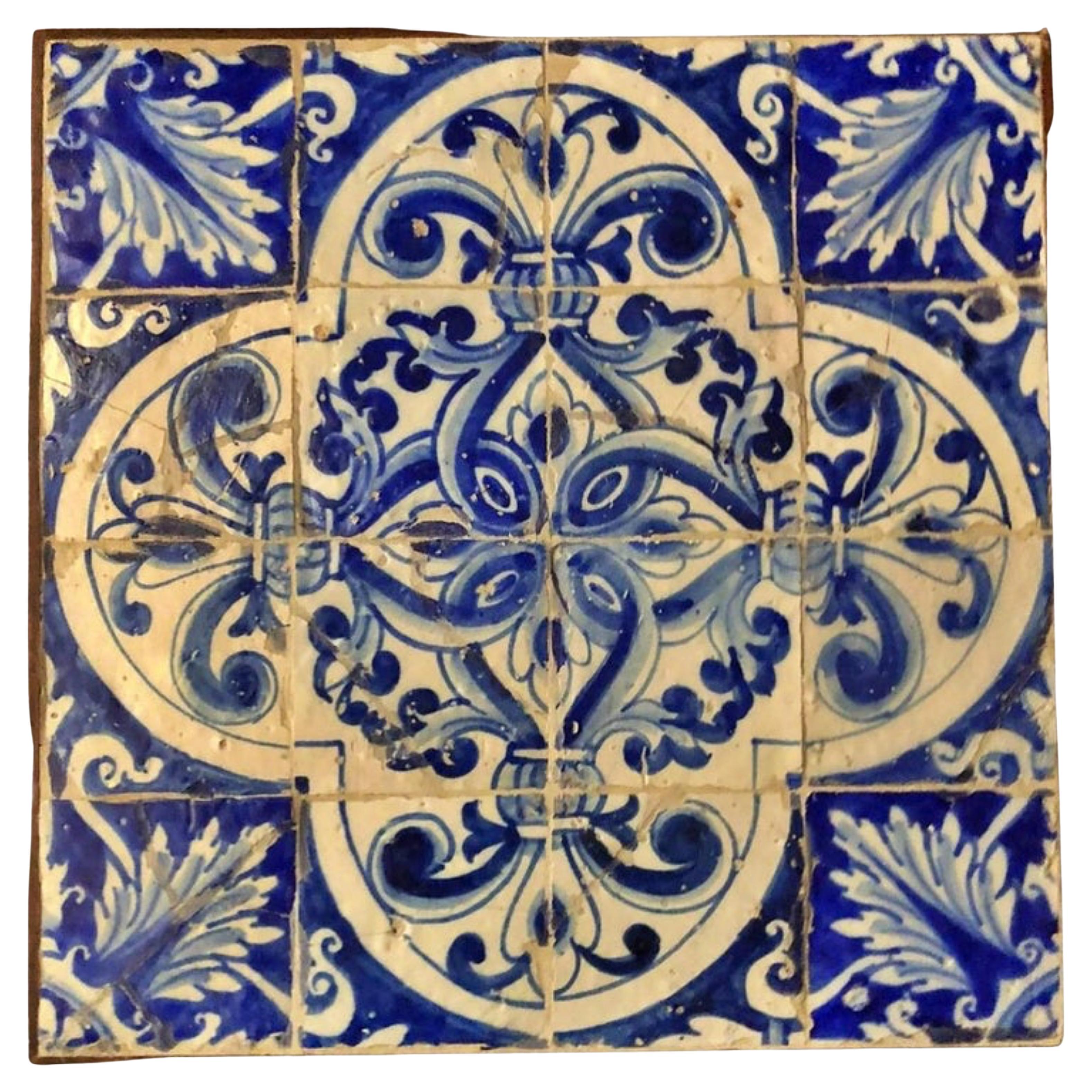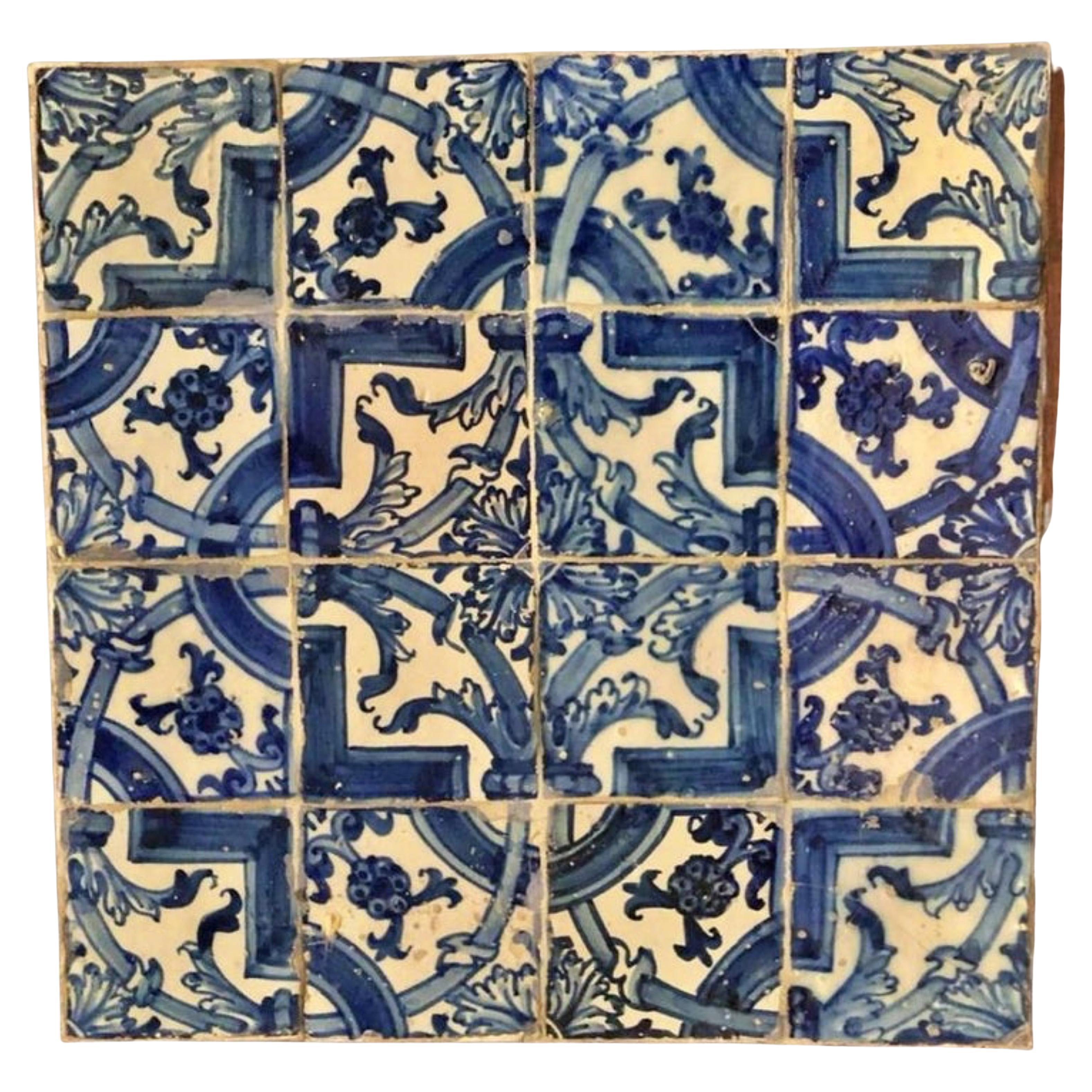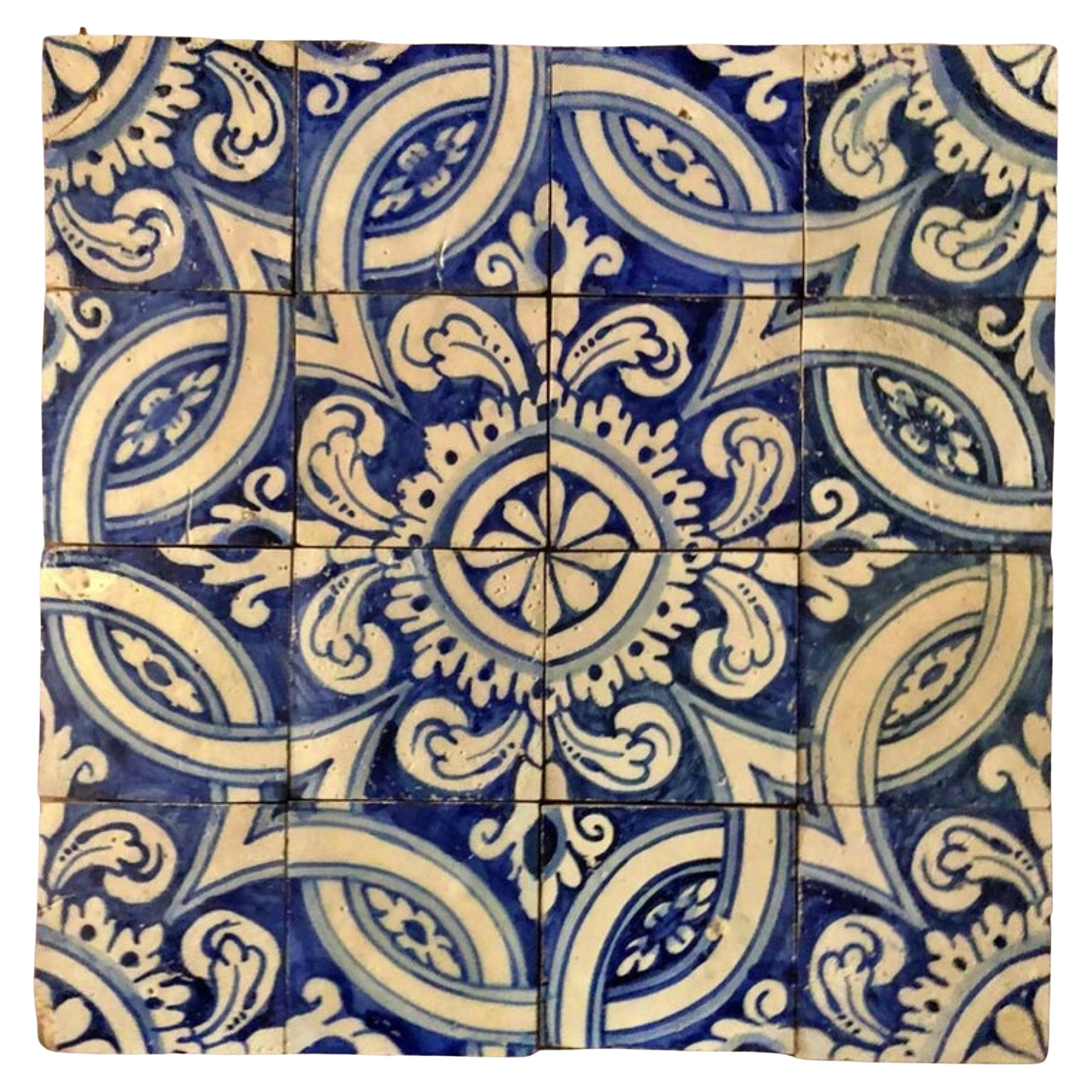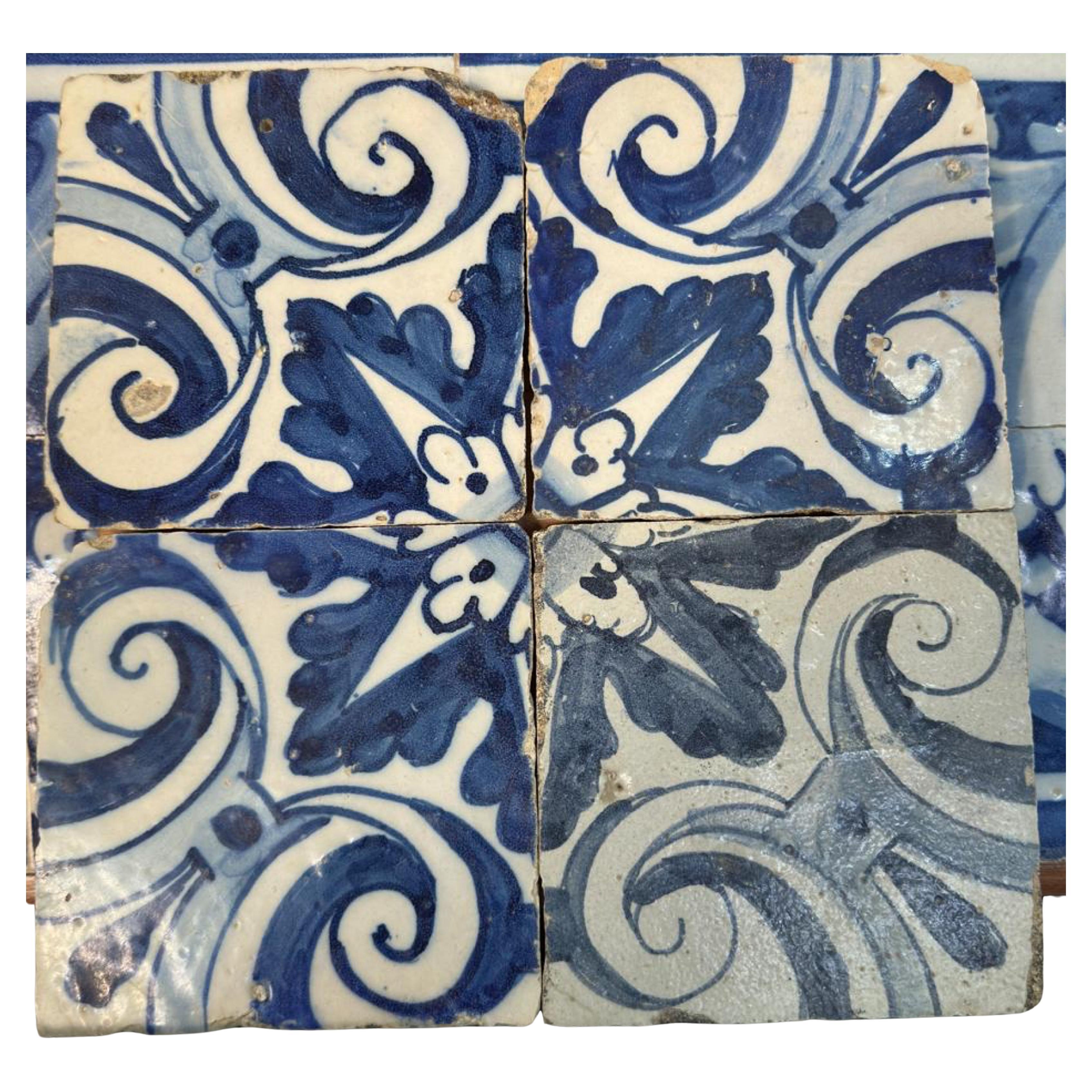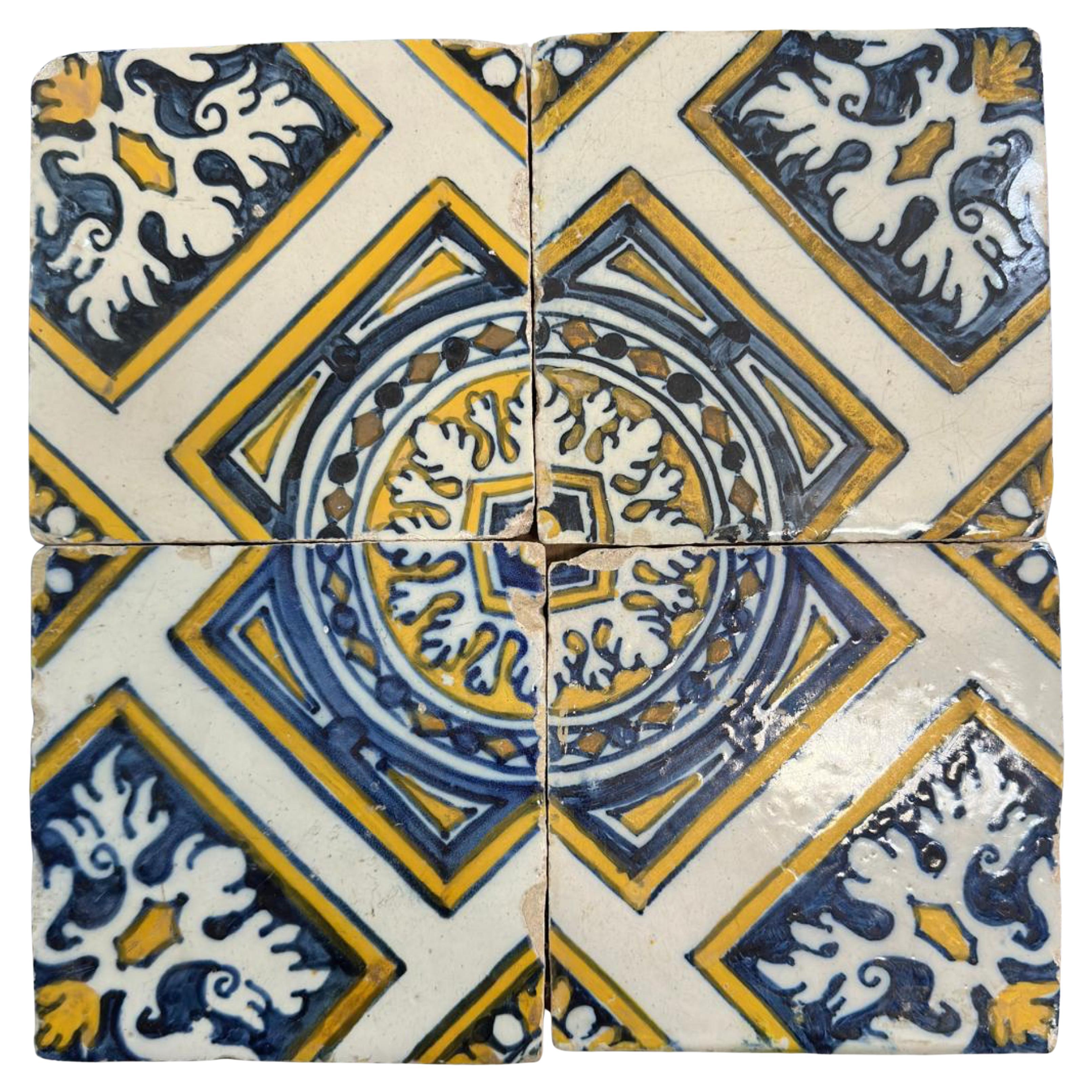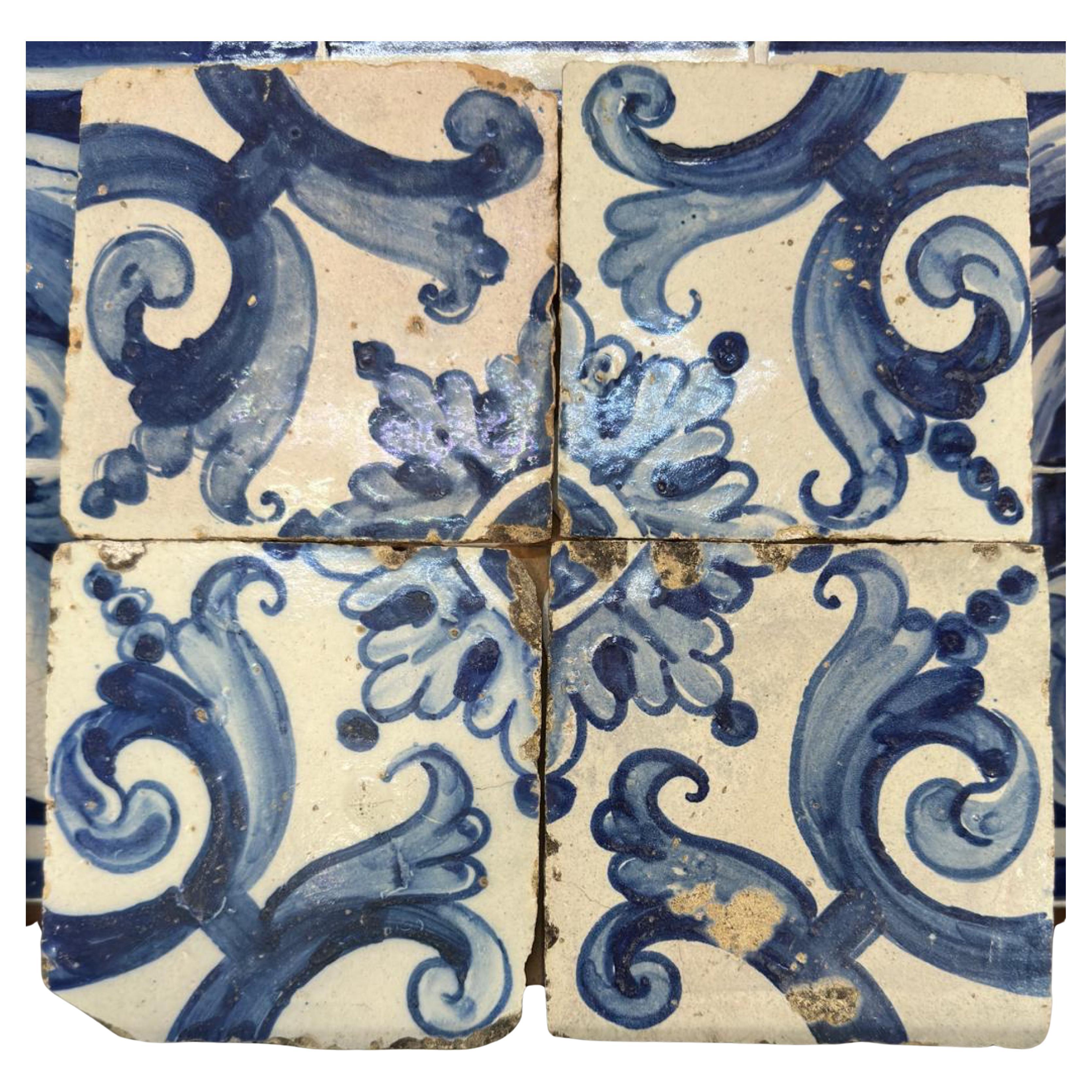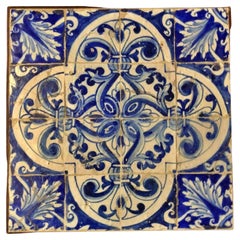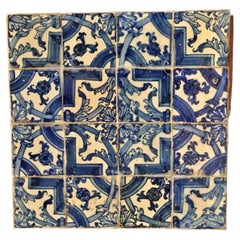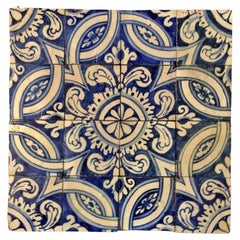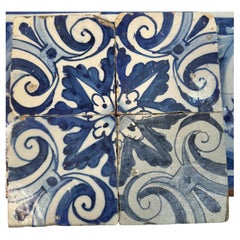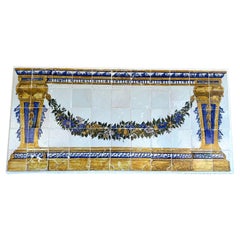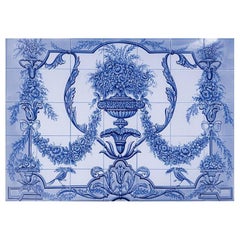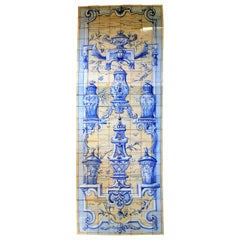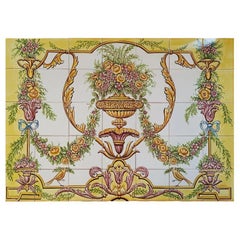Items Similar to 17th Century Portuguese Tile Panel
Want more images or videos?
Request additional images or videos from the seller
1 of 7
17th Century Portuguese Tile Panel
$4,523.83
£3,362.44
€3,800
CA$6,246.17
A$6,926.54
CHF 3,639.38
MX$84,630.50
NOK 45,533.62
SEK 42,741.08
DKK 28,935.10
About the Item
Largest collection of Portuguese tiles in the world
17th Century Portuguese Tile Panel.
Restored
56cm x 56cm
14cm x 14cm tiles
With certificate of authenticity and export issued by the Directorate General of Portuguese Cultural Heritage, the only official department for issuing certificates for works of art.
17th Century.
Shortly afterwards, these plain white tiles were replaced by polychrome tiles (enxaquetado rico) often giving a complex framework such as in the Igreja de Santa Maria de Marvila in Santarém, Portugal with one of the most outstanding tile-based interior decorations in Portugal.
When the diagonal tiles were replaced by a repetitive pattern of horizontal polychrome tiles, one could obtain a new design with different motifs, interlacing Mannerist drawings with representations of roses and camellias (sometimes roses and garlands). An inset votive usually depicts a scene from the life of Christ or a saint. These carpet compositions (azulejo de tapete), as they were called, elaborately framed with friezes and borders, were produced in great numbers during the 17th century. The best examples are to be found in the Igreja do Salvador, Évora, Igreja de S. Quintino, Obral de Monte Agraço, Igreja de S. Vicente, Cuba (Portugal) and the university chapel in Coimbra.
The use of azulejos for the decoration of antependia (front of an altar), imitating precious altar cloths, is typical for Portugal. The panel may be in one piece, or composed of two or three sections. They were used in the 16th, 17th and 18th centuries. Some antependia of the 17th century imitate oriental fabrics (calico, chintz). The golden fringes of the altar cloth were imitated by yellow motifs on the painted border tiles. Excellent examples can be found in the Hospital de Santa Marta, Lisbon, or in the Convent of Santa Maria de Almoster and the Convento de Santa Cruz do Buçaco.
During the same period another motif in friezes was introduced: floral vases flanked by birds, dolphins or putti, the so-called albarradas. They were probably inspired by Flemish paintings of flower vases, such as by Jan Brueghel the Elder. These were still free-standing in the 17th century, but they would be used in repetitive modules in the 18th century.
Azulejos dating from 1642 are in the Basilica and Convent de San Francisco de Lima, Peru.
Another type of azulejo composition, called aves e ramagens ('birds and branches'), came into vogue between 1650 and 1680. They were influenced by the representations on printed textiles that were imported from India: Hindu symbols, flowers, animals and birds.
In the second half of the 17th century, the Spanish artist Gabriel del Barco y Minusca introduced into Portugal the blue-and-white tiles from Delft in the Netherlands. The workshops of Jan van Oort and Willem van der Kloet in Amsterdam created large tile panels with historical scenes for their rich Portuguese clients, such as for the Palace of the Marqueses da Fronteira in Benfica, Lisbon. But when King Peter II stopped all imports of azulejos between 1687 and 1698, the workshop of Gabriel del Barco took over the production. The last major production from Holland was delivered in 1715. Soon large, home-made blue-and-white figurative tiles, designed by academically trained Portuguese artists, became the dominant fashion, superseding the former taste for repeated patterns and abstract decoration.
- Dimensions:Height: 22.05 in (56 cm)Width: 22.05 in (56 cm)Depth: 3.15 in (8 cm)
- Style:Baroque (Of the Period)
- Materials and Techniques:
- Place of Origin:
- Period:
- Date of Manufacture:17th Century
- Condition:Repaired. Wear consistent with age and use. restored and cleaning.
- Seller Location:Madrid, ES
- Reference Number:1stDibs: LU5779243134812
About the Seller
4.8
Platinum Seller
Premium sellers with a 4.7+ rating and 24-hour response times
Established in 2005
1stDibs seller since 2021
370 sales on 1stDibs
Typical response time: 1 hour
- ShippingRetrieving quote...Shipping from: Madrid, Spain
- Return Policy
Authenticity Guarantee
In the unlikely event there’s an issue with an item’s authenticity, contact us within 1 year for a full refund. DetailsMoney-Back Guarantee
If your item is not as described, is damaged in transit, or does not arrive, contact us within 7 days for a full refund. Details24-Hour Cancellation
You have a 24-hour grace period in which to reconsider your purchase, with no questions asked.Vetted Professional Sellers
Our world-class sellers must adhere to strict standards for service and quality, maintaining the integrity of our listings.Price-Match Guarantee
If you find that a seller listed the same item for a lower price elsewhere, we’ll match it.Trusted Global Delivery
Our best-in-class carrier network provides specialized shipping options worldwide, including custom delivery.More From This Seller
View All17th Century Portuguese Tile Panel
Located in Madrid, ES
Largest collection of Portuguese tiles in the world
17th Century Portuguese tile panel.
Restored
56cm x 56cm
14cm x 14cm tiles
17th Century
Shortly afterwards, these plain white ti...
Category
Antique 17th Century Portuguese Baroque Decorative Art
Materials
Porcelain
17th Century Portuguese Tile Panel
Located in Madrid, ES
Largest collection of Portuguese tiles in the world
17th Century Portuguese Tile Panel
Restored
56cm x 56cm
14cm x 14cm tiles
With certificate of authenticity and export issued by ...
Category
Antique 17th Century Portuguese Baroque Decorative Art
Materials
Porcelain
17th Century Portuguese Tile Panel
Located in Madrid, ES
Largest collection of Portuguese tiles in the world
17th Century Portuguese Tile Panel
Restored
56cm x 56cm
14cm x 14cm tiles
With certificate of authenticity and export issued by ...
Category
Antique 17th Century Portuguese Baroque Decorative Art
Materials
Porcelain
(4) Four Portuguese Tiles 17th Century (1630/1680) Very Rare Collectible
Located in Madrid, ES
(4) Four Portuguese Tiles 17th Century (1630/1680) Very Rare Collectible
each tile 14cm x 14cm
total: 28cm x 28cm
Original, unrestored
Ready to hang on the wall
The old Portugue...
Category
Antique 17th Century Portuguese Baroque Ceramics
Materials
Ceramic
(4) Four Portuguese Tiles 17th Century (1630/1680) Very Rare Collectible
Located in Madrid, ES
(4) Four Portuguese Tiles 17th Century (1630/1680) Very Rare Collectible
each tile 14cm x 14cm
total: 28cm x 28cm
Original, unrestored
Ready to hang on the wall
The old Portugue...
Category
Antique 17th Century Portuguese Baroque Ceramics
Materials
Ceramic
(4) Four Portuguese Tiles 17th Century (1630/1680) Very Rare Collectible
Located in Madrid, ES
(4) Four Portuguese Tiles 17th Century (1630/1680) Very Rare Collectible
each tile 14cm x 14cm
total: 28cm x 28cm
Original, unrestored
Ready to hang on the wall
The old Portugue...
Category
Antique 17th Century Portuguese Baroque Ceramics
Materials
Ceramic
You May Also Like
XIX Century Portuguese Tile Panel
Located in Lisboa, PT
XIX Century Portuguese Altar front Tile Panel with 44 Tiles
Altar fronts were rectangular tile panels that covered the part of the altar facing the faithf...
Category
Antique Late 19th Century Portuguese Decorative Art
Materials
Clay
18th Century Portuguese Tile Mural - Hand Painted Azulejo Tiles - Made to Order
Located in Baldock, GB
Beautiful tile mural with the "Floral" motif finely painted.
Quantity: 35 tiles
Tile mural size: 29.5"H X 41.3"W (75cm X 105cm)
Tile size: 5.9"H X 5.9"W (15cm X 15cm)
Origin: Po...
Category
21st Century and Contemporary Portuguese Modern Contemporary Art
Materials
Ceramic, Paint
$3,288 Sale Price
20% Off
Free Shipping
Superb Tile Panel by Valerian Rybar
Located in Atlanta, GA
A group of two superb tile panels by famous interior designer Valerian Rybar. Yellow, blue & white.
Dimensions: Height 111" Width 45" Depth 4".
Category
Antique 19th Century French Decorative Art
Materials
Porcelain, Ceramic, Textile
$9,500 / item
18th Century Portuguese Tile Mural - Hand Painted Azulejo Tiles - Made to Order
Located in Baldock, GB
Beautiful tile mural with the "Floral" motif finely painted.
Quantity: 35 tiles
Tile mural size: 29.5"H X 41.3"W (75cm X 105cm)
Tile size: 5.9"H X 5.9"W (15cm X 15cm)
Origin: Po...
Category
21st Century and Contemporary Portuguese Modern Contemporary Art
Materials
Ceramic, Paint
$3,288 Sale Price
20% Off
Free Shipping
Ceramic Mexican Tile Plaque or Table top
Located in Redding, CT
Ceramic Mexican Tile Plaque or Table top. Perfect accent piece for a South American decorator vibe. Colorful and vibrant panel to light up any room. Use on the wall or as a table top.
Category
Vintage 1970s Mexican Decorative Art
Materials
Ceramic, Wood
1 of the 350 Handmade Antique Ceramic Tiles by Devres, France, 1920s
By Devres
Located in Rijssen, NL
This is a large set of 350 antique French handmade ceramic tiles. Manufactured by Devres, circa 1920s. Colorful pattern in yellow, red and green. These tiles would be charming displa...
Category
Vintage 1920s French Folk Art Architectural Elements
Materials
Ceramic
More Ways To Browse
Large Horizontal Wall Art
Frieze Drawing
Lisbon Antique
Blue And White Delft Tiles
Christ The King
Antique Votive
17th Century Dutch Drawings
Antique Peruvian Textiles
Cuban Antiques
Delft Blue Holland Birds
Ave Maria
17th Century Dutch Tiles
Delft Tiles 17th Century
Christ Porcelain
Antique Furniture Santa Cruz
Antique Altar Cloth
Cuban Tile
Peru Painting Saint
